Markets take the stairs up, but the elevator down
GARCH Models in R

Kris Boudt
Professor of finance and econometrics
How?
Change the argument distribution.model of ugarchspec() from "norm" to "sstd":
garchspec <- ugarchspec( mean.model = list(armaOrder = c(0, 0)),
variance.model = list(model = "sGARCH"),
distribution.model = "norm")
$$ \downarrow$$
garchspec <- ugarchspec( mean.model = list(armaOrder = c(0, 0)),
variance.model = list(model = "sGARCH"),
distribution.model = "sstd")
The normal GARCH model
Under the model assumptions
$$ R_{t} = \mu_{t} + e_{t} $$ $$ e_{t} \sim N(0, \sigma^{2}_{t}) $$
it follows that
$$ \frac{R_{t} - \mu_{t}}{\sigma_{t}} \sim N(0, 1) $$
Let's test
- Caveat: The normality of the standardized returns follows from an assumption
- Let's compute the standardized returns and test whether the assumption is correct.
Estimated standardized returns
- Formula
$$ Z_{t} = \frac{R_{t} - \hat{\mu_{t}}}{ \hat{\sigma_{t}}} $$
Calculation in R
# Obtain standardized returns
stdret <- residuals(garchfit, standardize = TRUE)
Testing the normality assumption
library(PerformanceAnalytics)
chart.Histogram(sp500ret, methods = c("add.normal", "add.density"),
colorset = c("gray", "red", "blue"))
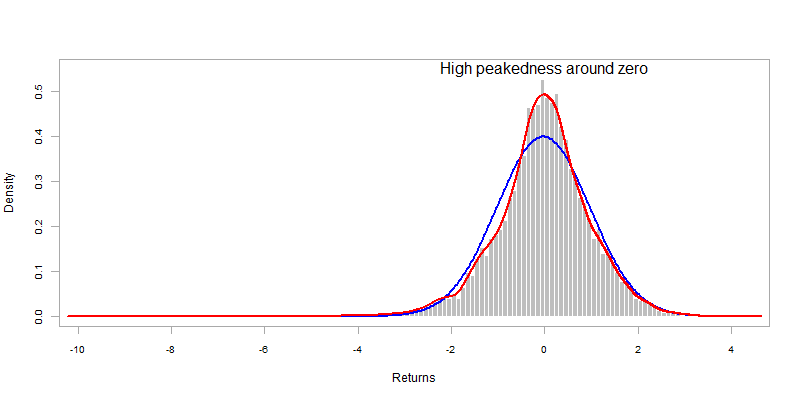
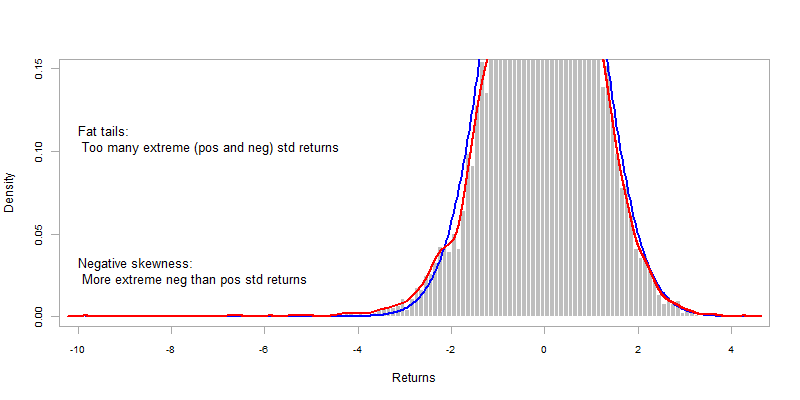
Solution
A realistic distribution thus needs to accommodate the presence of
- fat tails: higher probability to observe large (positive or negative) returns than under the normal distribution
- skewness: asymmetry of the return distribution
In
rugarchthis is possible with the skewed student t distribution:
garchspec <- ugarchspec(distribution.model = "sstd")
Parameters of the skewed student t distribution
Compared to the normal distribution, the skewed student t distribution has two extra parameters:
- Degrees of freedom parameter $\nu$ (in rugarch:
shape): the lower is $\nu$ the fatter the tails. - Skewness parameter $\xi$ (in rugarch:
skew) : when $\xi=1$: symmetry. When $\xi<1$: negative skewness. For $\xi>1$: positive skewness.
- Degrees of freedom parameter $\nu$ (in rugarch:
Special cases:
- When $\nu=\infty$ and $\xi=1$: normal distribution.
- When $\xi=1$: student t distribution.
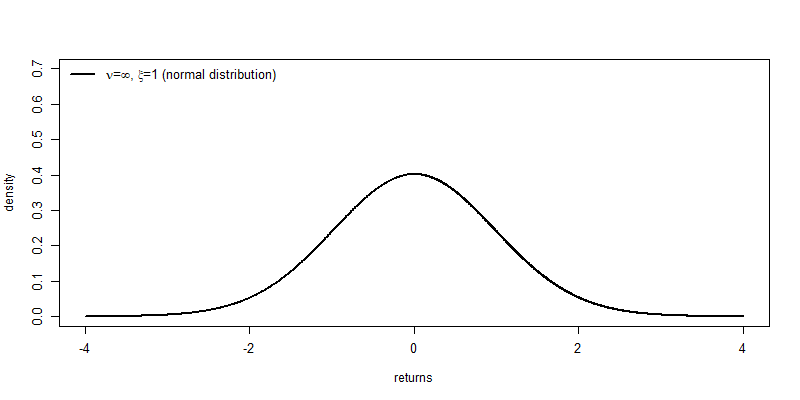
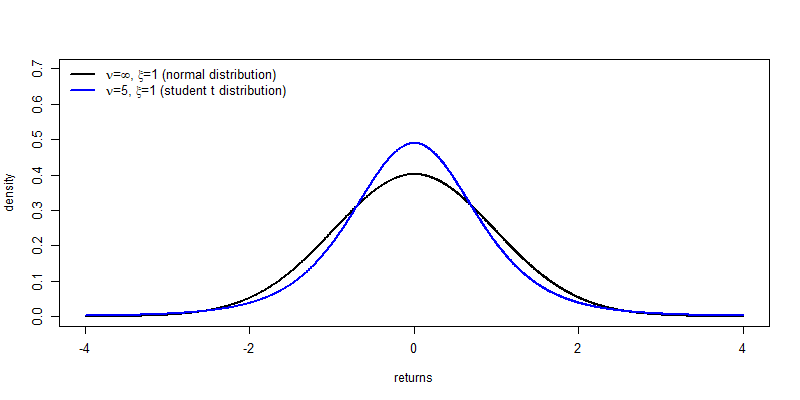
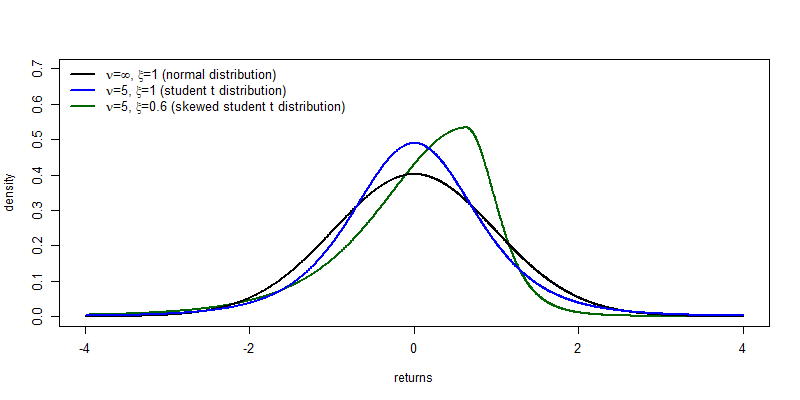
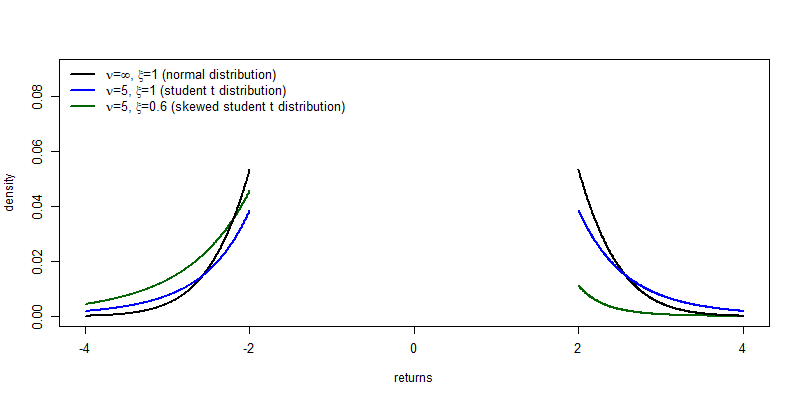
GARCH model estimation with skewed student t
Set argument distribution.model to "sstd"
garchspec <- ugarchspec(mean.model = list(armaOrder = c(0,0)),
variance.model = list(model = "sGARCH"),
distribution.model = "sstd")
Estimate the model
garchfit <- ugarchfit(data = sp500ret, spec = garchspec)
coef(garchfit)
mu omega alpha1 beta1 skew shape
5.669200e-04 6.281258e-07 7.462984e-02 9.223701e-01 9.436331e-01 6.318621e+00
Let's practice!
GARCH Models in R

